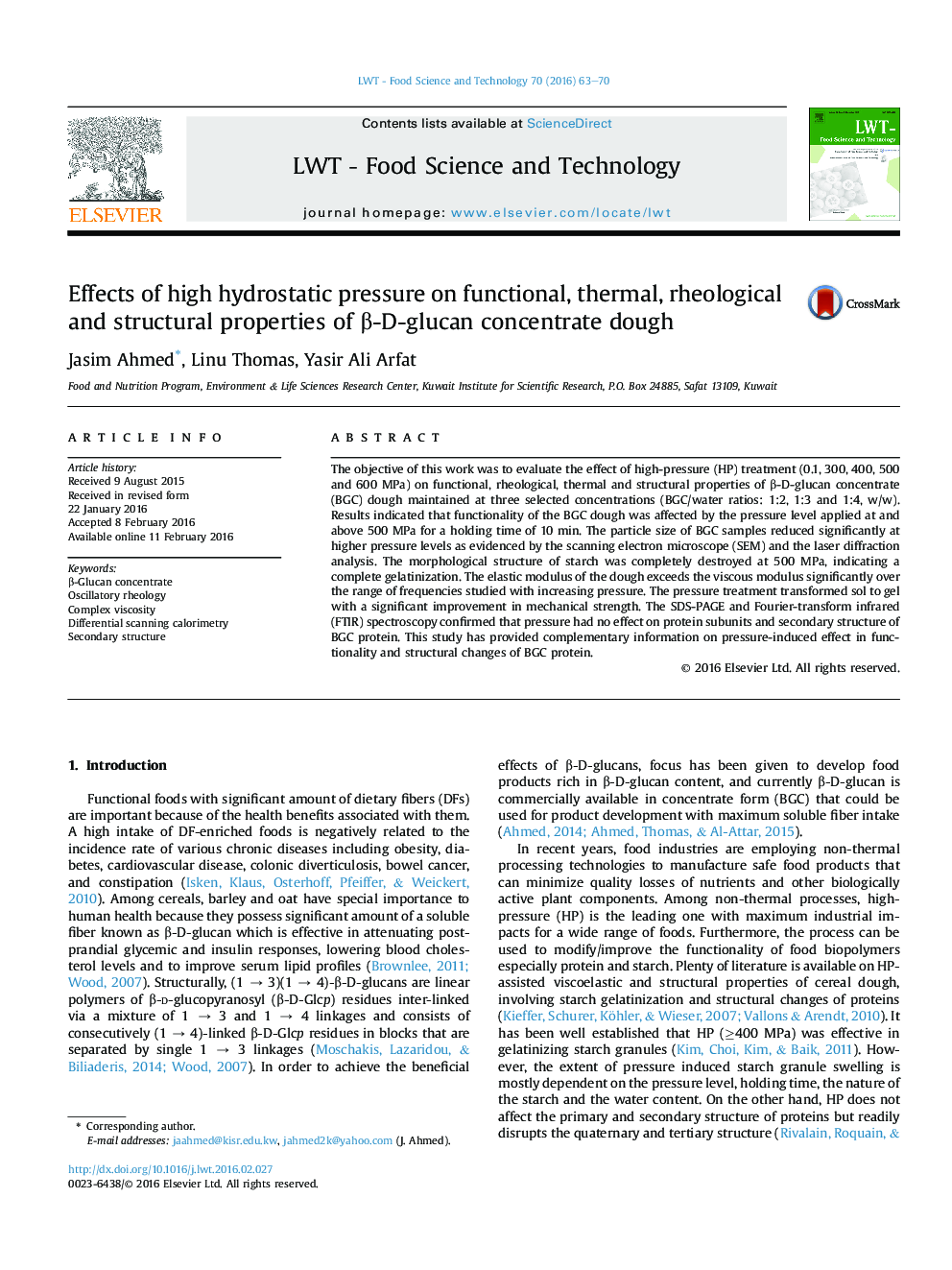| Article ID | Journal | Published Year | Pages | File Type |
|---|---|---|---|---|
| 4563568 | LWT - Food Science and Technology | 2016 | 8 Pages |
•Pressure treatment of β-glucan concentrate significantly affects functional properties.•The particle size reduced significantly at higher pressure levels.•The morphological structure of starch destroyed at 500 MPa.•Protein subunits and secondary structure of protein unaffected by pressure.
The objective of this work was to evaluate the effect of high-pressure (HP) treatment (0.1, 300, 400, 500 and 600 MPa) on functional, rheological, thermal and structural properties of β-D-glucan concentrate (BGC) dough maintained at three selected concentrations (BGC/water ratios: 1:2, 1:3 and 1:4, w/w). Results indicated that functionality of the BGC dough was affected by the pressure level applied at and above 500 MPa for a holding time of 10 min. The particle size of BGC samples reduced significantly at higher pressure levels as evidenced by the scanning electron microscope (SEM) and the laser diffraction analysis. The morphological structure of starch was completely destroyed at 500 MPa, indicating a complete gelatinization. The elastic modulus of the dough exceeds the viscous modulus significantly over the range of frequencies studied with increasing pressure. The pressure treatment transformed sol to gel with a significant improvement in mechanical strength. The SDS-PAGE and Fourier-transform infrared (FTIR) spectroscopy confirmed that pressure had no effect on protein subunits and secondary structure of BGC protein. This study has provided complementary information on pressure-induced effect in functionality and structural changes of BGC protein.
